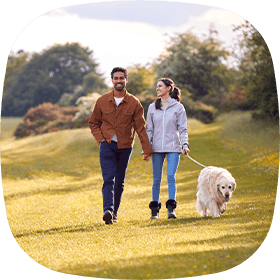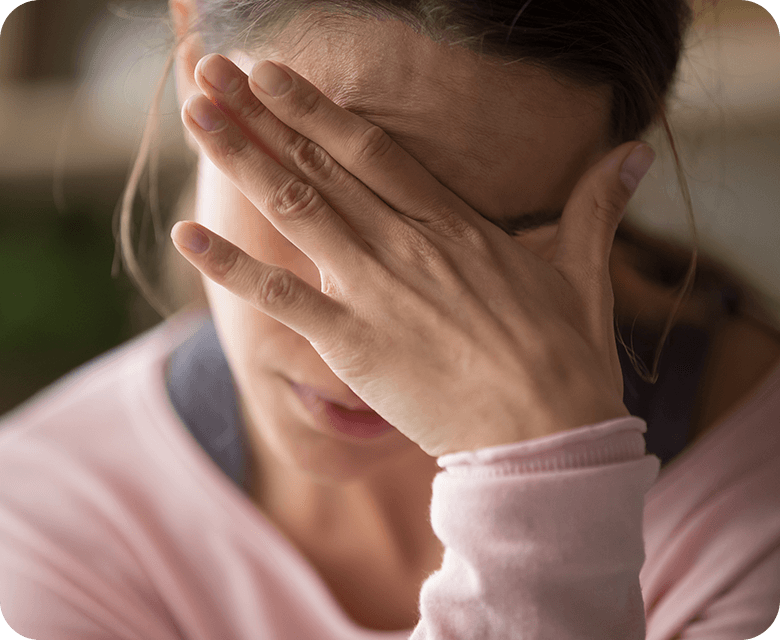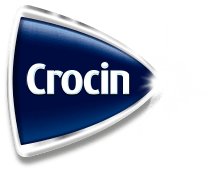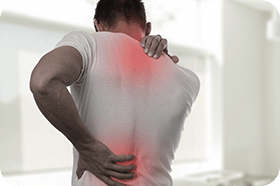Children's Dosage Calculator
For the correct dosage, enter child's age and weight:



Managing your pain for a full and healthy life
No matter how mild, suffering with any type of pain is never pleasant. Crocin range is here to help.
Discover all you need to know about managing pain, from the difference between acute and chronic pain to different pain management strategies you can try to help get some relief, with this complete guide to pain from Crocin.
While the experience of pain can vary from person to person,i unfortunately, pain itself is a pretty universal phenomenon.ii In fact, about 85% of people globally say they’ve experienced both head and body pain.ii
Any type of pain, no matter how mild, is nothing to shrug at. Research has found that pain can negatively affect many different aspects of our lives, including our career, social life, and even our ability to look after our family.ii
When it comes to managing pain, one of the best places to start is to determine what type of pain you’re experiencing, so you can get the relief you need as quickly as possible.
Keep reading for helpful advice on managing pain from Crocin– including an overview of different types of pain (e.g. chronic vs acute) and pain medicines, plus natural remedies to help you manage your pain – so you can get relief from pain and get back to the life you love as quickly as possible.

What are the different types of pain?
Pain can be categorised in lots of different ways, such as:iii
- where you feel the pain,
- how the pain feels (e.g. stabbing, burning, throbbing),
- the cause of the pain,
- the part of the body affected by the pain, and
- how long the pain lasts.
Pain categorised by location
When we talk about head pain (which includes migraine and other headache types),ii body pain (e.g. back and neck pain)ii and toothache, we’re categorising pain by location.
To be more specific, we’re categorising pain by perceived location. This is an important distinction to make because there is such a thing as ‘referred pain’, which is when we feel pain in a different part of the body than where it actually starts.iv For example, you may know that one of the first symptoms of a heart attack can be pain in the arm or shoulder – but did you know that it can also be preceeded by pain in the teeth or jaw?iv
Pain categorised by cause
In some instances, we talk about pain in relation to the condition that is causing it. For example, arthritis pain is both a type of pain as well as a disease that causes pain.iii
Pain categorised by the affected body system
Pain can also be defined based on the system in the body that is affected by.iii When we talk about pain in this way, we might talk about tissue pain, which can be caused by an injury such as a sprained ankle or a burn, or nerve pain, which can be caused by conditions such as shingles or sciatica.v
Acute vs chronic pain
Finally, we can also classify pain by how long it lasts. This is when we start talking about acute pain vs chronic pain.
There are some key differences between acute and chronic pain, including:
- How long the pain lasts. Acute pain lasts for fewer than three months, while chronic pain is defined by the World Health Organization as pain that persists or recurs for longer than three months.X
- How well the pain responds to treatment. Acute pain will usually improve after treatment, whereas chronic pain usually will not respond at all to many treatments.vi
- The type of treatment required to ease the pain. Over-the-counter treatments for pain very rarely have any kind of side effect, when used as directed, but some of the treatments used to treat chronic pain may cause harm or side effects.vi If you suffer from any form of chronic pain, speak to a healthcare professional about which treatment options may be right for you.
What’s the best approach to managing pain?
Pain killers, when used within recommended doses, play an important role in managing pain. Be sure to follow usage directions and consult with your healthcare provider to craft a pain management plan that’s best for you. Not all pain can or should be treated equally, so it’s important to work with your doctor or pharmacist to come up with the most appropriate pain management strategy for you.
Treatment options for pain typically fall into one of these categories: pain relief medicines, or natural or alternative remedies.
Pain relief medicines
Pain medicines come in many different forms, including topical and oral.
Topical pain medicines include gels or creams, and they’re designed to be applied directly onto the body, wherever you feel the pain. Oral medicines include tablets, caplets or drinkable liquids. They may be available over the counter (e.g. some NSAIDs, Paracetamol) or by prescription from your doctor.
Natural pain remedies
Natural remedies include hot and/or cold therapy (e.g. using a heat pack on a painful part of the body) and also certain supplements. In women with primary dysmenorrhoea (period pain not caused by an underlying condition), taking ginger was found to be as effective as ibuprofen in relieving pain.vii Learn more about treating pain naturally.
Alternative approaches
Alternative approaches to managing pain include methods like acupuncture and TENS (transcutaneous electrical nerve stimulation). Acupuncture comes from Chinese medicine and involves fine needles being inserted into specific sites on the body.viii TENS is a pain relief method that uses a mild electrical current to reduce the pain signals transmitted to the spinal cord and brain.ix
Crocin: an effective pain relief medicine
Crocin provides fast and effective temporary relief from pain and discomfort associated with many different common conditions – including headache, migraine, osteoarthritis and arthritis, cold and flu symptoms, toothache, muscular aches, sore throat pain.
Discover the full range of Crocin medicines today
Explore the full range of Crocin products and get effective temporary relief from your pain. Always read and follow all instructions on the product label when using any medication.






